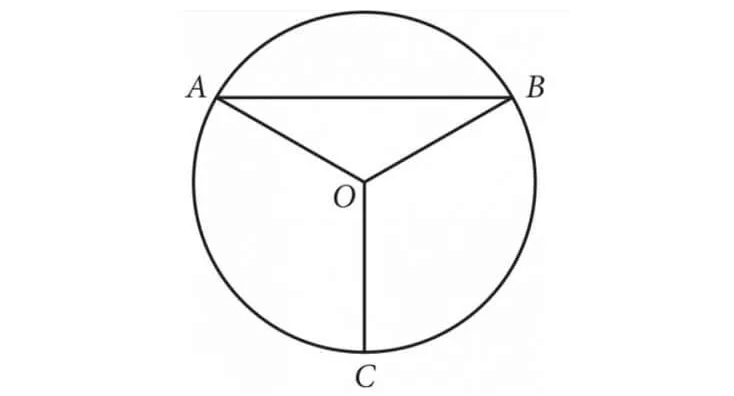EXPERIMENTAL AND THEORICAL PROBABILITY WORKSHEET
Experimental probability - practice questions.
Problem 1 :
Find the experimental probability of
(a) Tossing a head with one toss of a coin if it falls heads 96 times in 200 tosses.
(b) Rolling a six with a die given that when it was rolled 300 times, a six occurred 54 times
Problem 2 :
Find the experimental probability of rolling an odd number with a die if an odd number occurred 33 times when the die was rolled 60 times. Solution
Problem 3 :
Clem fired 200 arrows at a target and hit the target 168 times. Find the experimental probability of Clem hitting the target. Solution
Problem 4 :
Ivy has free-range hens. Out of the first 123 eggs that they laid she found that 11 had double-yolks. Calculate the experimental probability of getting a double-yolk egg from her hens. Solution
Problem 5 :
Jackson leaves for work at the same time each day. Over a period of 227 working days, on his way to work he had to wait for a train at the railway crossing on 58 days. Calculate the experimental probability that Jackson has to wait for a train on his way to work.
Problem 6 :
Ravi has a circular spinner marked P, Q and R on equal sectors. Find the experimental probability of getting a Q if the spinner was twirled 417 times and finished on Q on 138 occasions.
Problem 7 :
Each time Claude shuffled a pack of cards before a game, he recorded the suit of the top card of the pack His results for 140 games were 34 Hearts, 36 Diamonds, 38 Spades and 32 Clubs.
Find the experimental probability that the top card of a shuffled pack is :
(a) a Heart (b) a Club or Diamond
(1) (a) 96/200 (b) 54/300
(2) 11/20
(3) 168/200
(4) 11/123
(5) 58/227
(6) 138/417
(7) (a) 34/140 (b) 68/140

Theoretical Probability
A die is rolled. What is the theoretical probability of getting :
b) a "prime number"?
A bag contains 1 yellow, 2 green and 5 blue beds. One bead is chosen at random. Find the probability that it is :
(a) Yellow (b) not yellow

1 A die numbered 1 to 6 is rolled once. Find:
b) P(even number)
c) P(a number at least 1)
e) P(not a 5)
f) P(a number greater than 6)
The five illustrated cards are well shuffled and placed face down on a table. One of the cards is randomly chosen.

A bag contains 10 beads. 5 are white, 2 are red, 1 is blue, 1 is green and 1 is black. A bead is taken at random from the bag. Find:
a) P(white)
c) P(not black) Solution
A letter is randomly chosen from GENEVA.
a) Find the probability that it is:
b) Given that the letter chosen first is a G and it is removed, what is the probability that a second randomly chosen letter is a vowel? Solution
A dart board has 30 sectors, numbered 1 to 30. A dart is thrown towards the bulls-eye and misses in a random direction. Determine the probability that the dart hits:

a) a multiple of 5
b) a number between 7 and 13 inclusive
c) a number greater than 18
e) a multiple of 7
f) an even number that is a multiple of 3.
(1) (a) 1/6 (b) 1/2
(2) (a) 1/8 (b) 7/8
(3) (a) 1/6 (b) 1/2 (c) 1 (d) 1/6 (e) 5/6 (f) 0
(4) (a) 2/5 (b) 1/5 (c) 4/5 (d) 4/5
(5) (a) 1/2 (b) 1/10 (c) 9/10
(6) (a) (i) 1/3 (ii) 0 (b) 3/5
(7) (a) 1/5 (b) 7/30 (c) 11/30 (d) 1/30 (e) 2/15
(f) 1/6

Apart from the stuff given above, i f you need any other stuff in math, please use our google custom search here.
Kindly mail your feedback to [email protected]
We always appreciate your feedback.
© All rights reserved. onlinemath4all.com
- Sat Math Practice
- SAT Math Worksheets
- PEMDAS Rule
- BODMAS rule
- GEMDAS Order of Operations
- Math Calculators
- Transformations of Functions
- Order of rotational symmetry
- Lines of symmetry
- Compound Angles
- Quantitative Aptitude Tricks
- Trigonometric ratio table
- Word Problems
- Times Table Shortcuts
- 10th CBSE solution
- PSAT Math Preparation
- Privacy Policy
- Laws of Exponents
Recent Articles
SAT Math Resources (Videos, Concepts, Worksheets and More)
Nov 21, 24 06:23 AM
Digital SAT Math Problems and Solutions (Part - 75)
Nov 21, 24 06:13 AM


Digital SAT Math Problems and Solutions (Part - 74)
Nov 20, 24 08:12 AM

Theoretical and Experimental Probability Worksheets
Probability is the branch of mathematics concerning numerical descriptions of how likely an event is to occur, or how likely it is that a proposition is true. The probability of an event is a number between 0 and 1, where, roughly speaking, 0 indicates impossibility of the event and 1 indicates certainty.
Benefits of Theoretical and Experimental Probability Worksheets
Experimental probability is the results of an experiment, let's say for the sake of an example marbles in a bag. Experimental probability would be drawing marbles out of the bag and recording the results. Theoretical probability is calculating the probability of it happening, not actually going out and experimenting.
Download Theoretical and Experimental Probability Worksheet PDFs
These math worksheets should be practiced regularly and are free to download in PDF formats.

IMAGES
VIDEO